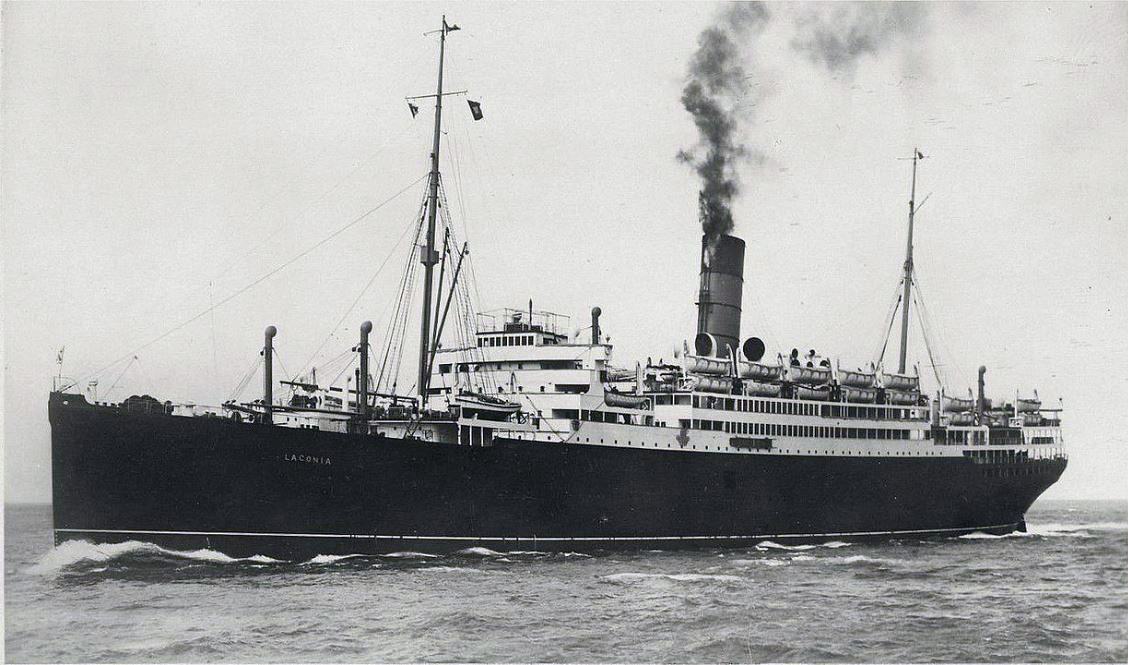Difference between revisions of "RMS Laconia"
From Our Contribution
(Created page with "{{Infobox ship | image = File:RMS_Laconia.jpg | caption = photo from a Cunard Line Postcard c.1921 | image2 = | caption2 = | shipname = RMS...") |
(No difference)
|
Revision as of 02:20, 27 August 2019
Remarks
Originally built for the Liverpool to Boston and New York route. In 1925 the Laconia' collided with a British schooner Lucia P. Dow 110 km from the US East coast. Taking the damaged schooner under tow the Laconia handed over the tow close to the coast. Again involved in a collision, on 24 Sep 1934, this time in fog with the US freighter Pan Royal. On this occasion both ships suffered serious damage, but able to make port. The Laconia was refitted in New York and returned to service in 1935.
On 4 Sep 1939 the Laconia was requisitioned by the British Admiralty and converted into an armed merchant cruiser. She spent the first six months of 1940 escorting convoys on the US side of the Atlantic before running aground in the Halifax harbour. Soon after she was refitted, with extra buoyancy in case she was torpedoed. When ready she was set to the Middle East to move troops around, and on her last voyage she carried a large number of Italian POWs from Egypt via Cape Town to the UK. However, on 12 Sep 1942 she was hit by a torpedo, and later as she settled by another. While most of the British and Polish soldiers survived, only415 of the 1,809 Italian POWs were rescued.
The German U Boat (U-156) surfaced and began to take on board survivors, along with several other U-Boats, all flying the red cross flag. However, the next morning a US B 26 Liberator aircraft spotted them and when asked by the German commander to provide assistance, sought permission form its HQ. Ordered to bomb and strafe the U-boats, many of the survivors were killed as the U-boats had to submerge to escape the attack. From that point, German U-Boats no longer sought to rescue victims of their attacks.
